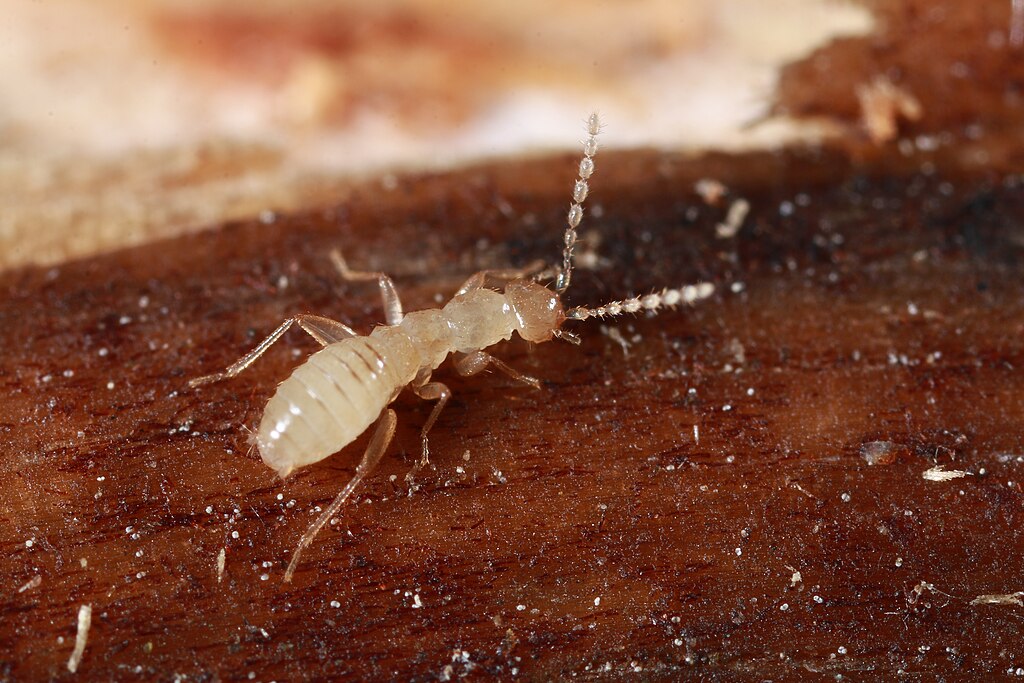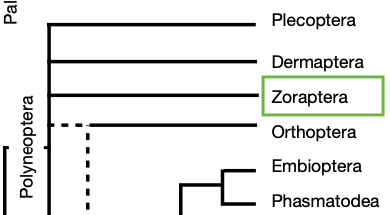19 Orders of Insects: Zoraptera


Order Zoraptera
Zoraptera
- common name: angel insects or zorapterans
- in Greek “zor” means pure and “aptera” means wingless; when first described the only known specimens were wingless–they have since found winged forms (alates)
- Order first described in 1913; about 30-50 species worldwide, many undescribed; distributed worldwide except not in Australia
- Tropical to warm temperate climates
- Gregarious
- Found in leaf litter, rotting wood or near termite colonies
- likely eat fungi
Characteristics of Zoraptera
Adults
- Small (<4mm), termite-like, pale
- hypognathous, mandibulate mouthparts
- winged species have compound eyes and ocelli, wingless species lack both eyes and ocelli,
- Moniliform antennae
- If winged, the wings have simple venation and are readily shed
- abdomen 11 -segmented, short and swollen with single segmented cerci
Immatures
- Immature stages (nymphs) resemble small adults
Keen to know more?
Check out these links:
- Some Zoraptera have giant sperm, about 3 mm long, and use external sperm transfer via a spermatophore. Males of one species package a single sperm into a spermatophore and deposits it on the outside of the female’s abdomen.
- Check out this entertaining and informative video on zorapterans on the Insect spotlight project (YouTube, 10m 09s).

